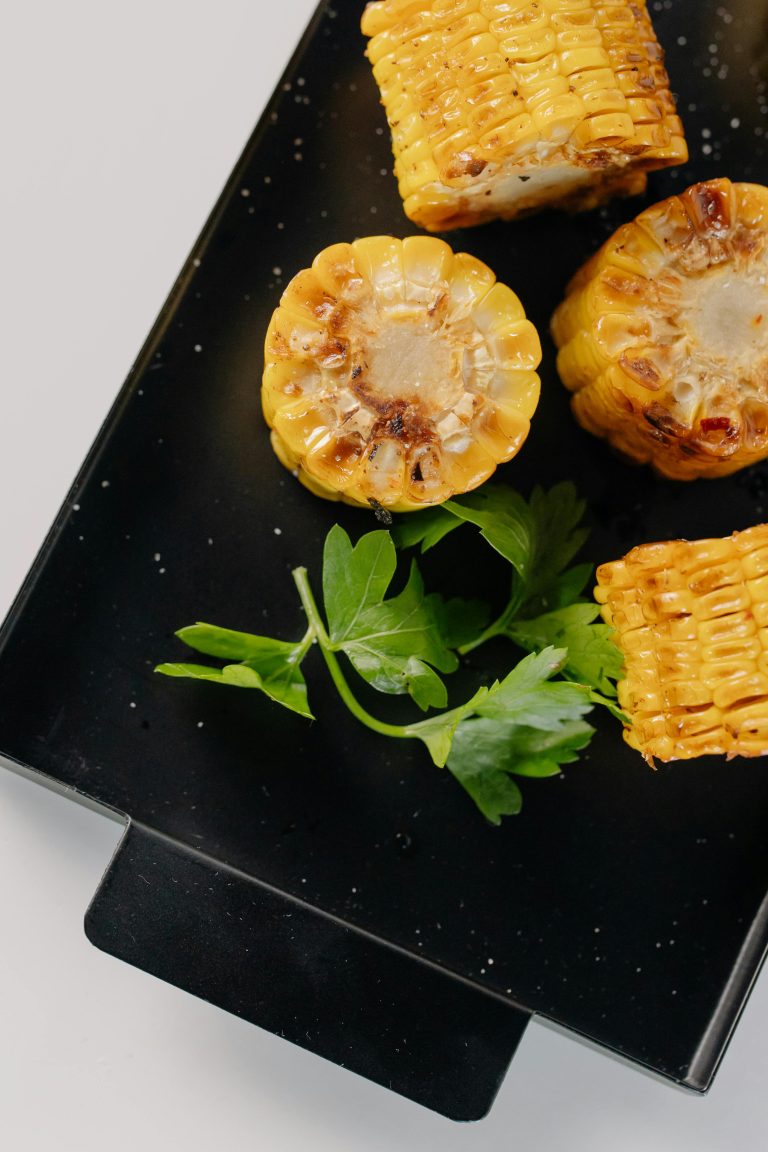Are you a fan of Italian cuisine? If so, you're likely familiar with ciabatta bread. This delicious and versatile bread has become a staple in many households and restaurants around the world. But have you ever wondered if ciabatta bread is actually healthy? Well, you're in luck because in this article, we will explore the truth about ciabatta bread and its impact on your health.
What is ciabatta bread?
Ciabatta bread, meaning “slipper” in Italian, is a type of white bread that is known for its unique shape and texture. It is characterized by its soft and chewy interior and a thin, crispy crust. Ciabatta bread is made with simple ingredients, including flour, water, yeast, salt, and sometimes olive oil. This bread is typically hand-shaped and then baked in the oven, giving it its signature appearance.
The history of ciabatta bread
Ciabatta bread was invented in the early 1980s by a baker named Arnaldo Cavallari. He was inspired to create a bread that would rival the French baguette in popularity. Cavallari wanted to develop a bread with a soft interior and a crust that was perfect for sandwiches. After experimenting with various recipes, he finally created the beloved ciabatta bread that we know today.
The characteristics of ciabatta bread
Ciabatta bread is known for its unique characteristics that set it apart from other types of bread. Its key features include:
1. Soft and chewy texture: Ciabatta bread has a light and airy texture on the inside, making it perfect for sandwiches or as a base for bruschetta.
2. Crispy crust: The thin, crispy crust of ciabatta bread adds a delightful crunch to each bite.
3. Irregular shape: Unlike traditional bread loaves, ciabatta bread is hand-shaped and has a rustic, irregular appearance.
4. Porous interior: The large, open pores inside ciabatta bread are ideal for soaking up flavors and sauces.
Different uses of ciabatta bread
Ciabatta bread is incredibly versatile and can be used in a variety of ways. Here are some popular ways to enjoy ciabatta bread:
1. Sandwiches: Due to its soft interior and sturdy crust, ciabatta bread is perfect for creating delicious sandwiches. Whether you prefer a classic ham and cheese or a gourmet panini, ciabatta bread will add a special touch to your sandwich creations.
2. Bruschetta: Slice ciabatta bread, toast it, and top it with fresh tomatoes, basil, garlic, and olive oil for a delicious and quick appetizer or snack.
3. Dipping bread: Due to its porous interior, ciabatta bread is ideal for dipping in olive oil, balsamic vinegar, or other sauces.
4. Toast: For a simple and satisfying breakfast or snack, toast slices of ciabatta bread and spread them with butter, jam, or your favorite toppings.
Nutritional content of ciabatta bread
Ciabatta bread is a good source of nutrients and provides several health benefits. Let's take a closer look at the nutritional content of ciabatta bread and how it can contribute to a healthy diet.
Carbohydrates in ciabatta bread
Carbohydrates are the main source of energy for our bodies. Ciabatta bread is rich in carbohydrates, which makes it an excellent source of fuel to keep us going throughout the day. One slice of ciabatta bread contains approximately 15 grams of carbohydrates.
Calories in ciabatta bread
If you're watching your calorie intake, it's important to be mindful of the number of calories in your food. Ciabatta bread is moderately high in calories, with one slice containing around 130 calories. However, keep in mind that the number of calories may vary depending on the size and thickness of the slice.
Fiber content in ciabatta bread
Fiber is an essential nutrient that aids in digestion and helps maintain bowel regularity. While ciabatta bread is not typically considered a high-fiber food, it does contain a small amount of dietary fiber. One slice of ciabatta bread provides approximately 1 gram of fiber.
Sodium levels in ciabatta bread
Sodium is an important mineral that plays a role in maintaining fluid balance in our bodies. However, consuming too much sodium can contribute to high blood pressure and other health issues. It's worth noting that ciabatta bread can be relatively high in sodium, with one slice containing around 200 milligrams. Therefore, individuals who are watching their sodium intake should consume ciabatta bread in moderation.
Iron content in ciabatta bread
Iron is a mineral that is essential for the production of red blood cells and the transportation of oxygen throughout our bodies. Ciabatta bread contains a small amount of iron, with one slice providing about 1% of the recommended daily intake.
Calcium content in ciabatta bread
Calcium is a vital mineral that is important for maintaining healthy bones and teeth. Although ciabatta bread is not a significant source of calcium, it does provide a small amount. One slice of ciabatta bread contains approximately 1% of the recommended daily intake of calcium.
Vitamin content in ciabatta bread
Ciabatta bread contains various vitamins, although the amounts may be relatively small compared to other food sources. It is a source of B vitamins, such as thiamin and riboflavin, which play a critical role in energy production and the functioning of the nervous system.
Health benefits of ciabatta bread
Now that we've explored the nutritional content of ciabatta bread, let's delve into its potential health benefits. While ciabatta bread should be enjoyed as part of a balanced diet, it can offer several advantages for overall health and well-being.
Preventing type-II diabetes
The low glycemic index of ciabatta bread makes it a suitable choice for individuals with type-II diabetes. Foods with a low glycemic index release glucose more slowly into the bloodstream, preventing spikes in blood sugar levels. This can help with blood sugar management and reduce the risk of complications associated with diabetes.
Aiding in weight management
When consumed in moderation, ciabatta bread can be a valuable part of a weight management plan. The carbohydrates in ciabatta bread provide energy while keeping you feeling satisfied. Additionally, including ciabatta bread in your meals can help prevent overeating and provide a sense of satiety.
Improving heart health
Whole grain ciabatta bread, made from whole wheat flour, can be a heart-healthy choice. Whole grains are rich in fiber, which has been shown to help lower cholesterol levels and reduce the risk of heart disease. Choosing whole grain ciabatta bread can contribute to a heart-healthy diet.
Strengthening the immune system
Ciabatta bread contains various vitamins and minerals that support a healthy immune system. B vitamins, such as thiamin and riboflavin, play a crucial role in immune function. Additionally, iron is essential for the production of white blood cells, which are responsible for fighting off infections and keeping the immune system strong.
How to consume ciabatta bread in a healthy way
While ciabatta bread can be part of a healthy diet, it's important to consume it in moderation and make mindful choices. Here are some tips for enjoying ciabatta bread in a healthy way:
1. Portion control: Be mindful of the portion size when consuming ciabatta bread. One or two slices per serving is usually sufficient.
2. Choose whole grain: Opt for whole grain ciabatta bread, which retains more nutrients and fiber compared to white ciabatta bread.
3. Load up on veggies: When using ciabatta bread for sandwiches or bruschetta, incorporate plenty of fresh vegetables to boost the nutritional value of your meal.
4. Pair with lean protein: To make your meal more balanced and satisfying, add a lean source of protein, such as grilled chicken, turkey, or legumes, to your ciabatta bread-based dishes.
5. Limit added toppings: Be cautious of high-calorie and high-fat toppings, such as butter or excessive amounts of cheese, when enjoying ciabatta bread.
Potential adverse effects of consuming ciabatta bread
While ciabatta bread offers several health benefits, it is essential to be aware of potential adverse effects associated with its consumption.
Hypernatremia risks
Ciabatta bread can be relatively high in sodium, which may pose a risk for individuals with certain health conditions, such as hypertension or kidney disorders. Consuming too much sodium can contribute to fluid retention and elevated blood pressure. It is advisable to consume ciabatta bread in moderation and be mindful of overall sodium intake.
Allergies to ciabatta bread
Individuals with gluten intolerance or celiac disease should avoid consuming ciabatta bread or opt for gluten-free alternatives. Ciabatta bread is made from wheat flour, which contains gluten—a protein that can trigger adverse reactions in individuals with gluten-related disorders.
Kidney disorders and ciabatta bread
Individuals with kidney disorders, such as chronic kidney disease, may need to limit their intake of ciabatta bread due to its sodium content. High sodium intake can complicate kidney function and exacerbate symptoms in these individuals. It is advisable to consult with a healthcare professional or registered dietitian for personalized dietary recommendations.
Hypertension risks
Excessive sodium intake, as found in ciabatta bread, can contribute to high blood pressure. Individuals with hypertension or those who need to watch their blood pressure should be cautious when consuming ciabatta bread. Opting for lower-sodium options or limiting portion sizes can be beneficial in regulating blood pressure levels.
Inflammation and ciabatta bread consumption
Some individuals may experience increased inflammation in their bodies due to gluten sensitivity or other reasons. In these cases, consuming ciabatta bread or any gluten-containing products may exacerbate inflammation symptoms. It's important to listen to your body and consult with a healthcare professional if you suspect gluten sensitivity or have any inflammatory conditions.
Tips for moderation and portion control when consuming ciabatta bread
To enjoy ciabatta bread while maintaining a healthy lifestyle, it's essential to practice moderation and portion control. Here are some tips to keep in mind:
1. Be mindful of serving size: One or two slices of ciabatta bread is usually sufficient for a serving.
2. Avoid mindless snacking: Instead of eating ciabatta bread on its own as a snack, incorporate it into meals or pair it with protein and vegetables for a more balanced and satisfying option.
3. Listen to your hunger cues: Eat ciabatta bread when you're hungry, and stop eating when you're satisfied. Pay attention to your body's signals instead of mindlessly consuming excess bread.
4. Balance your meals: Make sure your meals include a variety of food groups, such as lean protein, vegetables, fruits, and healthy fats, to ensure a balanced diet.
Alternatives to ciabatta bread for health-conscious individuals
If you're looking for alternatives to ciabatta bread that may better suit your dietary needs or preferences, here are a few options to consider:
1. Whole grain bread: Opt for whole grain bread, which contains more fiber and nutrients than white bread. Look for labels that specify “100% whole grain” for the healthiest option.
2. Gluten-free bread: If you have gluten intolerance or celiac disease, there are many gluten-free bread options available made from alternative grains like rice, quinoa, or buckwheat.
3. Sprouted grain bread: Sprouted grain bread is made from grains that have been allowed to sprout before being ground into flour. This process may increase the nutritional value and decrease the concentration of antinutrients found in grains.
Incorporating ciabatta bread into a balanced diet
While it's important to consume ciabatta bread in moderation, it can still be enjoyed as part of a healthy and balanced diet. Here are some tips for incorporating ciabatta bread into your meals:
1. Pair it with lean protein: Top ciabatta bread with lean protein sources like grilled chicken or turkey to create a balanced and satisfying meal.
2. Add plenty of vegetables: Load up your ciabatta bread-based dishes with fresh vegetables to increase the nutritional value and add flavor.
3. Make it a side: Instead of making ciabatta bread the main focus of your meal, use it as a side dish to accompany a nutritious main course.
Strategies to make ciabatta bread healthier
If you enjoy ciabatta bread but want to make it even healthier, here are some strategies to consider:
1. Opt for whole grain: Choose whole grain ciabatta bread instead of the white variety. Whole grain bread contains more fiber and nutrients, making it a healthier choice.
2. Avoid excessive toppings: Be mindful of the toppings you add to your ciabatta bread, as they can significantly affect its nutritional profile. Opt for healthier options like fresh vegetables, lean protein, and healthy spreads.
3. Go easy on the butter: While butter can add flavor to ciabatta bread, it is high in saturated fat. Use it sparingly or consider healthier alternatives like olive oil or avocado spread.
4. Homemade ciabatta: Making your own ciabatta bread allows you to control the ingredients and create a healthier version. You can experiment with whole grain flours or incorporate other nutritious ingredients like seeds or ancient grains.
Finding healthier versions of ciabatta bread
If you prefer store-bought ciabatta bread, look for healthier versions that align with your dietary preferences. Consider the following options:
1. Whole grain or whole wheat: Choose ciabatta bread made with whole grain or whole wheat flour, which provides more fiber and nutrients compared to refined white flour.
2. Organic options: Look for organic ciabatta bread to reduce exposure to synthetic pesticides and potentially harmful chemicals.
3. Artisan or local bakeries: Check out local artisan or specialty bakeries that may offer ciabatta bread made with high-quality ingredients and traditional baking methods.
The role of ciabatta bread in a Mediterranean diet
Ciabatta bread can be a part of a Mediterranean diet when consumed in moderation and as part of a balanced meal plan. In the Mediterranean diet, ciabatta bread is often enjoyed with fresh fruits, vegetables, lean proteins, and healthy fats such as olive oil. It is used as a vehicle for various healthy toppings and dips, such as hummus or tzatziki.
The Mediterranean diet is well-known for its numerous health benefits, including reducing the risk of heart disease, improving cognitive function, and promoting overall longevity. Incorporating ciabatta bread into a Mediterranean-style meal can add variety and enjoyment to your diet.
Tips for choosing quality ciabatta bread
When purchasing ciabatta bread, consider the following tips to ensure you're selecting a quality product:
1. Check the ingredients: Look for ciabatta bread with minimal ingredients, avoiding those that contain preservatives or artificial additives.
2. Consider the freshness: Choose ciabatta bread that is freshly baked or made in small batches for optimal flavor and texture.
3. Look for a crispy crust: A good-quality ciabatta bread should have a thin, crispy crust that is golden brown in color.
4. Check for airiness: Gently squeeze the loaf to ensure it feels light and airy, indicating that it has a soft and chewy interior.
5. Seek out local bakeries: Local bakeries often take pride in their bread-making process and use high-quality ingredients, resulting in a superior product.
How to store ciabatta bread to maintain its freshness
To keep ciabatta bread fresh for longer and maintain its crispy crust, follow these storage tips:
1. Store at room temperature: Keep ciabatta bread in a dry, cool place, away from direct sunlight and heat sources.
2. Avoid the refrigerator: Refrigeration can cause ciabatta bread to become stale and lose its desirable texture.
3. Wrap it loosely: Wrap the bread in a paper bag or a clean kitchen towel to protect it from drying out, but allow for airflow.
4. Freeze for longer storage: If you want to keep ciabatta bread fresh for an extended period, consider freezing it. Slice it before freezing, so you can defrost only the amount you need.
Making homemade ciabatta bread for a healthier option
If you want to have more control over the ingredients and create a healthier version of ciabatta bread, consider making it at home. Here's a basic recipe to get you started:
Ingredients:
– 500g bread flour
– 350ml water
– 10g salt
– 7g active dry yeast
Instructions:
1. In a large mixing bowl, combine the flour, water, salt, and yeast. Mix the ingredients until a sticky dough forms.
2. Cover the bowl with plastic wrap or a clean kitchen towel and let the dough rise for about 2 hours, or until it has doubled in size.
3. Preheat the oven to 450°F (230°C) and place a baking stone or baking sheet in the oven to preheat as well.
4. Transfer the dough onto a floured surface. Divide it into two equal portions and shape each portion into a rectangular loaf.
5. Place the loaves onto a baking sheet lined with parchment paper. Let them rise for another 30-45 minutes.
6. Once the loaves have risen, carefully transfer them onto the preheated baking stone or baking sheet. Bake for 25-30 minutes, or until the loaves are golden brown and have a hollow sound when tapped on the bottom.
7. Remove the ciabatta bread from the oven and let it cool on a wire rack before slicing and serving.
By making your own ciabatta bread, you have the flexibility to customize the recipe to suit your dietary preferences, such as using whole grain flour or adding additional ingredients like herbs or seeds.
Conclusion
So, is ciabatta bread healthy? The answer lies in moderation and mindful consumption. While ciabatta bread offers nutritional benefits and can be part of a balanced diet, it's important to be aware of portion sizes and choose healthier options when possible. By incorporating ciabatta bread into a balanced meal plan and making smart choices, you can enjoy this delicious Italian bread while supporting your overall health and well-being.



